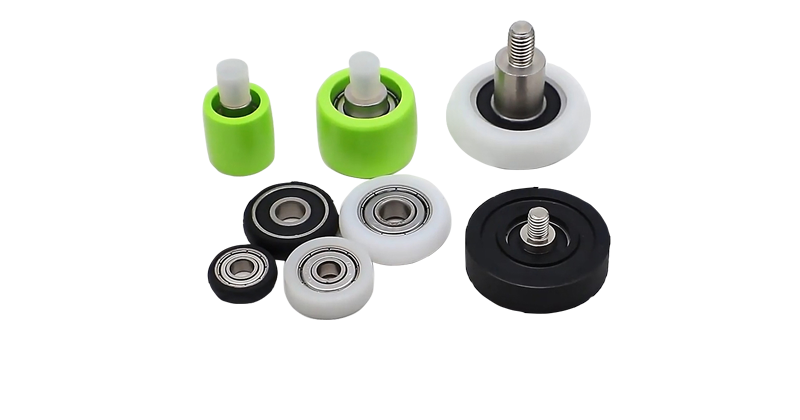86-15820855246(WhatsApp)
info@semeimachinery.com
Sliding door rollers are specialized components designed to facilitate the smooth and efficient movement of sliding doors. They are typically installed at the top or bottom of the door panels and roll along a track or guide, ensuring that the door moves effortlessly and remains aligned.
Roller Wheel:
Material: Usually made of materials like Polyurethane(PU), Nylon, POM, PA, or POK pulley wheels.
Shape: Can be cylindrical, conical, or V-shaped, depending on the specific application and track design.
Mounting Bracket:
Material: Typically made of metal (e.g., steel or aluminum) for durability.
Function: Attaches the roller to the door panel and allows for adjustments in height and alignment.
Bearing:
Material: Often made of steel or other durable materials.
Function: Reduces friction and ensures smooth rotation of the roller wheel.
Axle:
Material: Usually made of steel or other strong materials.
Function: Supports the roller wheel and connects it to the mounting bracket.
Top-Hung Rollers:
Position: Installed at the top of the door panel.
Advantages: Provide better support and stability, especially for heavier doors.
Common Uses: Suitable for large sliding doors, such as those found in patios and commercial settings.
Bottom-Rollers:
Position: Installed at the bottom of the door panel.
Advantages: Help distribute the weight of the door and provide additional support.
Common Uses: Commonly used in standard interior sliding doors and closet doors.
Double Rollers:
Design: Feature two roller wheels on a single bracket.
Advantages: Provide extra stability and support, reducing the risk of the door coming off the track.
Common Uses: Ideal for heavy or wide sliding doors.
Load Capacity:
Range: Varies depending on the size and material of the roller.
Importance: Ensures the roller can support the weight of the door without failing.
Durability:
Materials: High-quality materials like stainless steel, aluminum, and polyurethane ensure long-lasting performance.
Maintenance: Regular cleaning and lubrication can extend the lifespan of the rollers.
Noise Reduction:
Design: Some rollers are designed to minimize noise during operation.
Materials: Soft materials like polyurethane and nylon can reduce noise and vibration.
Adjustability:
Function: Many rollers are adjustable, allowing for fine-tuning of the door's position and alignment.
Importance: Ensures the door operates smoothly and remains aligned with the track.
Corrosion Resistance:
Materials: Stainless steel and aluminum are commonly used for their resistance to rust and corrosion.
Importance: Extends the lifespan of the rollers, especially in outdoor or humid environments.
Installation:
Measure and mark the positions for the rollers on the door panel.
Attach the mounting brackets to the door.
Install the rollers onto the brackets and align them with the track.
Test the door to ensure it slides smoothly and is properly aligned.
Steps:
Maintenance:
Regular Cleaning: Clean the rollers and track regularly to remove dust and debris.
Lubrication: Apply a suitable lubricant to the rollers to reduce friction and noise.
Inspection: Periodically inspect the rollers for signs of wear or damage and replace them if necessary.
Residential:
Interior Doors: Closet doors, room dividers, and sliding doors in bathrooms and kitchens.
Exterior Doors: Patio doors and garage doors.
Commercial:
Office Spaces: Partition walls and sliding doors in conference rooms.
Retail Stores: Display cases and sliding doors in fitting rooms.
Industrial:
Warehouses: Large sliding doors for loading docks and storage areas.
Factories: Interior and exterior sliding doors for various applications.
Sliding door rollers are essential components that ensure the smooth and efficient operation of sliding doors. They come in various types and designs to meet different needs and applications. By understanding their key features and proper maintenance, you can ensure that your sliding doors function optimally and last longer.
